Our Mission
The National Trust for Scotland Foundation USA encourages Americans to connect with the things that make Scotland unique – from coastlines to castles, from art to architecture, from wildlife to wilderness – our mission is to protect them for future generations.
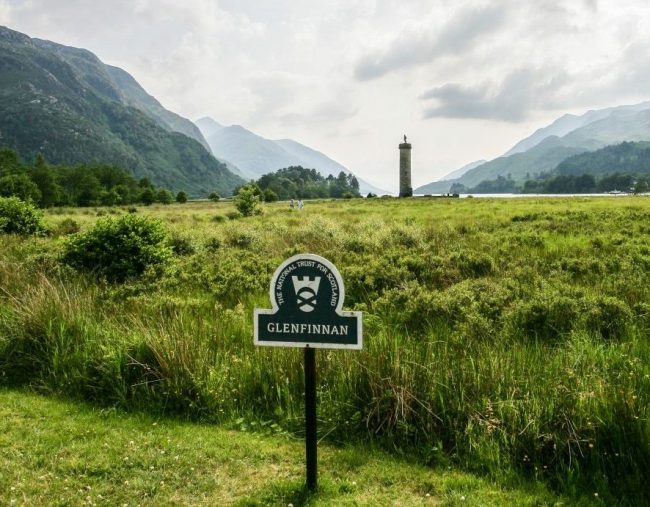
How We Help
As an independent American not-for-profit corporation, The National Trust for Scotland Foundation USA exists to support the work of Scotland’s largest conservation charity. Our mission is to provide grants for projects that protect Scotland’s natural, built, and cultural heritage, while providing American donors with valuable tax benefits.
Since 2000, we have granted nearly $10 million to preserve Scotland’s most iconic and inspiring places, including Glencoe, Glenfinnan, Culloden Battlefield, Culzean Castle & Country Park, JM Barrie’s Birthplace, St Kilda, Iona, Crathes Castle, Brodie Castle, Hill House, and the Robert Burns Birthplace Museum.
Grants to Scotland
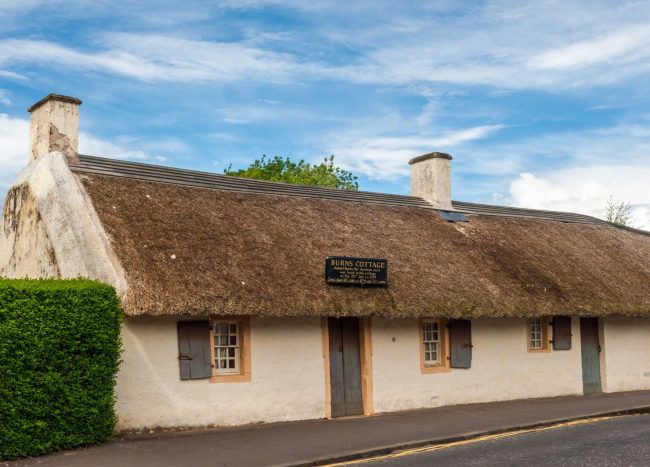
Robert Burns Birthplace Museum
The Foundation has long supported work at the Robert Burns Birthplace Museum, and in Fiscal Year 2018-19 we funded important structural repairs to the exterior of the Burns Cottage and the development of a public garden space behind the Cottage that has improved the environment for the benefit of the local Ayrshire community and is encouraging environmental conservation action at a local level.
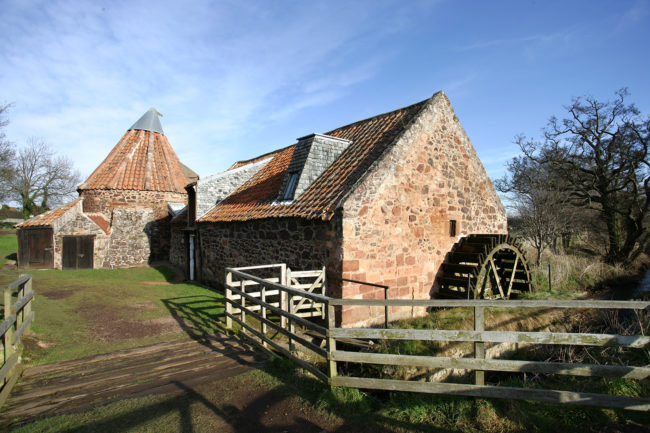
Preston Mill’s Water Wheel
Made famous by its use as Lallybroch in Outlander, when you first see Preston Mill you might think you’ve taken a step back in time. Last winter, the Mill’s water wheel fused and would no longer turn. NTS USA partnered with NTS on what turned out to be a wildly successful social media crowdfunder to fund the repairs needed to fix the wheel. With the help of Outlander fans around the globe, and Outlander star Sam Heughan who has been vocal in his support of the campaign, the necessary funds were raised in just a couple short weeks!
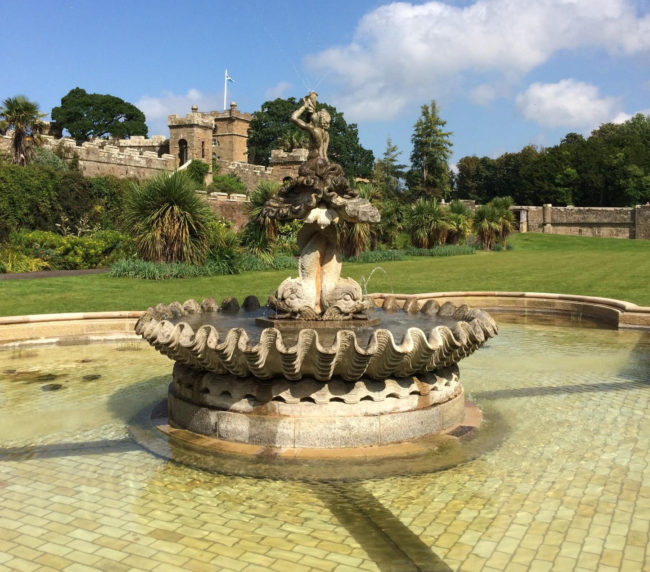
The Fountain Court at Culzean Castle
With the help of members and friends who generously supported our 2018 annual appeal we were able to fully fund the restoration of the water feature at the center of Culzean Castle’s Fountain Court. The repairs are now complete and the magnificent fountain is fully functional again. The restoration work was completed with the expertise of Culzean’s own preservation stonemasons!
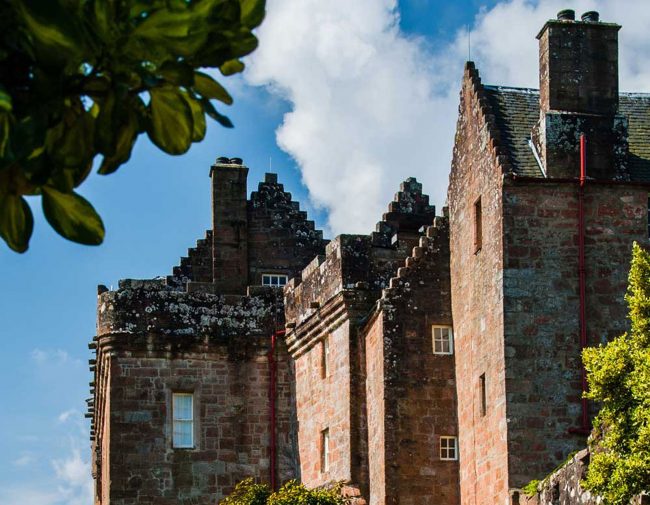
Brodick Castle Lead Repair
Funding from the US Foundation helped to make possible a long-term roof repair scheme at Brodick Castle. The roof of the castle requires regular maintenance to the leadwork on the cap-house roof and parapet gutter, and re-slating and re-pointing of any weathered mortar joints to the chimneys and walls at this level. However, this is a difficult and un-safe area to access. The maintenance team at the Castle developed temporary scaffolding around the tower that enabled them to make comprehensive repairs and install a discrete safety harness system to allow future maintenance to be carried out more easily.
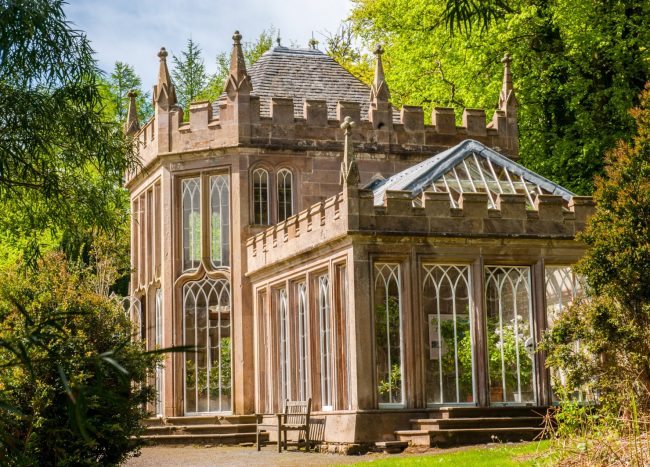
Camellia House at Culzean Castle and Country Park
Designed in 1818 as an Orangery, this beautiful structure is now used to grow camellias. In 2011-12, urgent repairs were necessary for public safety and the conservation of the building. Now completed, the Camellia House is a registered wedding venue, providing another revenue stream for the property that would not have been possible without the generosity of one special American benefactor.
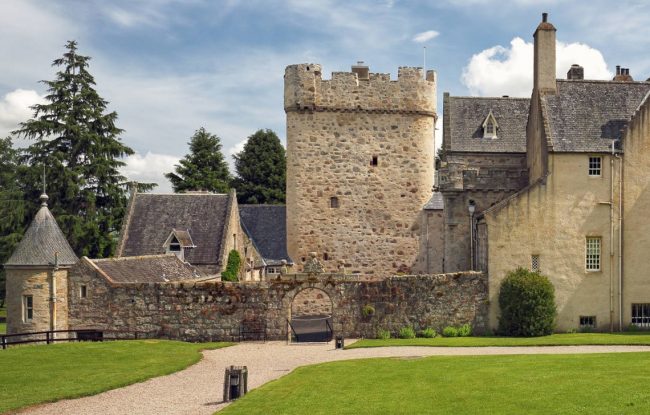
Medieval Stair at Drum Castle
Research and restoration to a stair located in the cellar of Drum Castle resulted in confirmation that the artefact was used as far back as the early 15th century. With generous support from an American donor, this research provided new and significant information on the archaeological history of Drum Castle. Conservation work to the stair will provide an opportunity for visitor education and interpretation.
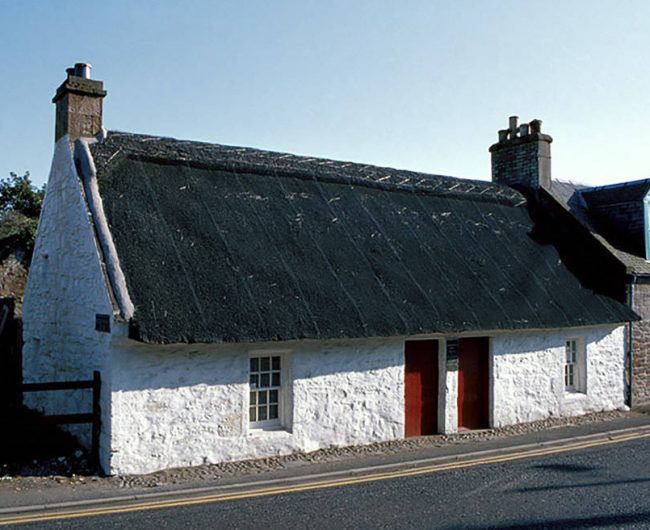
Souter Johnnie’s Ale House Cottage
The subject of the 2013 Annual Appeal, funding from Americans across the country has made possible the re-thatching of Souter Johnnie’s Ale House Cottage using traditional building methods. The cottage is one of the last of its kind in Scotland making the conservation not only critical to preserving the history of traditional roof thatching but also quite challenging. Both the expertise and the traditional heather thatching materials are in short supply. Thankfully these were acquired and work was able to commence in the early summer of 2015.
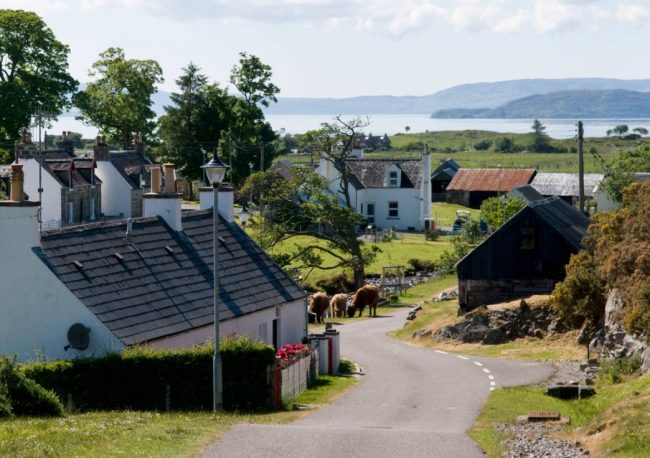
Traditional Crofting at Balmacara
The Traditional Croft Management Program encourages the continuation of small scale, communal farming practices on the Balmacara Estate and protects these increasingly rare agricultural communities. Crofting plays an important part in shaping the landscape, cultural heritage, and social economy of the Highlands and many other parts of Scotland. Since 2012, American donors and private foundations have provided the funding to help continue these farming practices that, once lost, are unlikely to be revived.
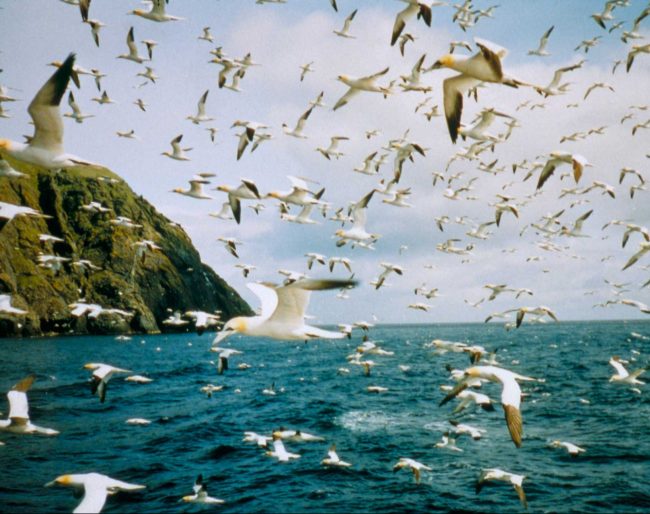
St. Kilda Seabird Monitoring
St. Kilda is an archipelago located in the Outer Hebrides, 41 miles west of North Uist. An internationally significant natural and cultural heritage site, it is recognized by UNESCO as a dual World Heritage Site. The area is the largest seabird sanctuary in the North-East Atlantic, welcoming over 1 million seabirds in the spring and the summer months. Funding from the US Foundation will support wildlife protection efforts on the islands, which now include the marine environment as well because of its importance to the seabird colony.
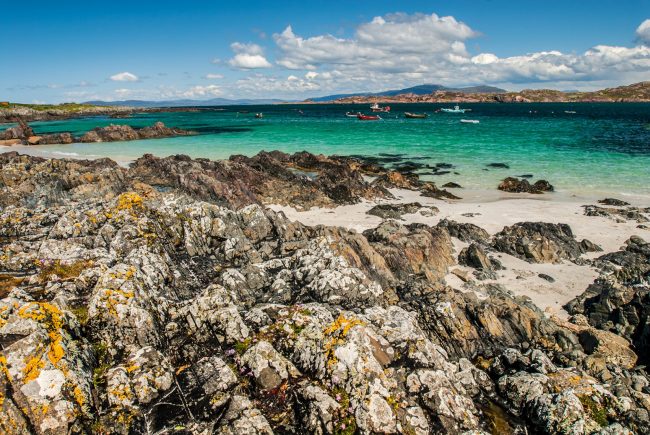
Iona Shelter
Through the generosity of an American donor, we made a grant to fund the building of a visitor information area and shelter on the Isle of Iona. Iona welcomes over 120,000 visitors annually, however the small island has few facilities to provide them with information or shelter. This funding will support a new building on the island that will include shelter, orientation and welcome information, seating, and ferry information, as well as a lockable storage area.
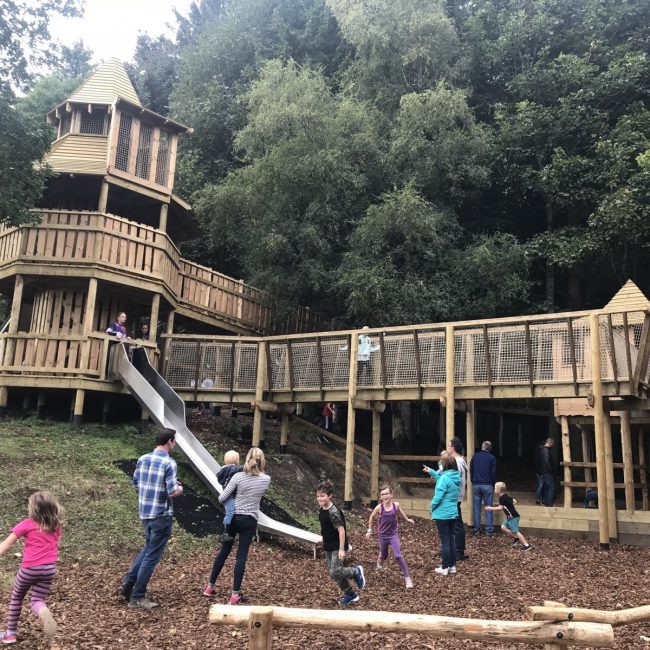
Wild Wood Playground at Crathes Castle
A generous American donor helped to fund the Wild Wood Adventure playground at Crathes Castle. The previous play area was in poor condition and the modern upgrade is encouraging more visits to the property from families, the local community as well as being a popular site for school visits. Surrounded by towering trees on this wildlife-rich estate, children can conquer the heights of the Green Lady’s Tower, scramble up the rock face challenge and zoom between the trees on the zip wire.
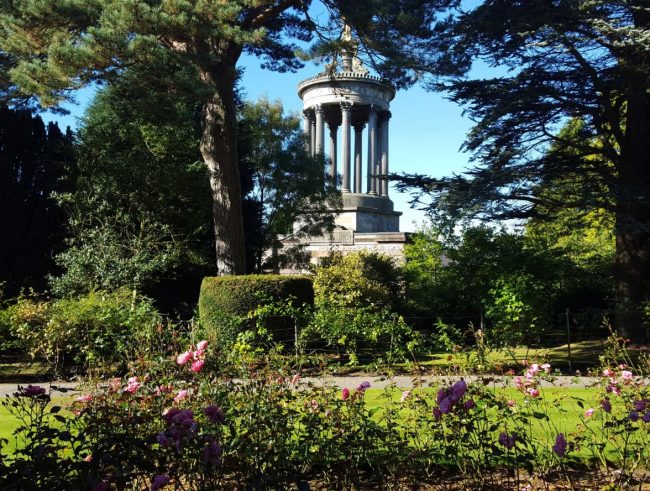
Burns Monument
The subject of our tremendously successful 2014 Annual Appeal, the Burns Monument will benefit from donations made by hundreds of American donors. The monument, the first memorial dedicated to the life and work of Robert Burns, is in need of vital repairs due to water ingress which has damaged the structure. Repairs are anticipated to begin in the summer of 2016 and will provide an opportunity to refresh interpretation around the iconic structure.
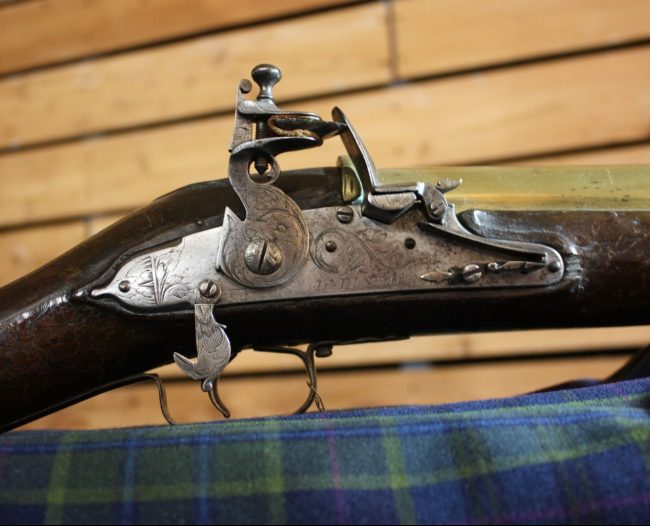
Culloden Blunderbuss
With the support of American donors and contributions from across the world, at the end of 2014 the National Trust for Scotland was able to purchase the Culloden blunderbuss for its permanent collection. The blunderbuss will remain at Culloden, allowing public access to this important and historic artifact. This acquisition will advance educational opportunities at Culloden, helping young people to understand the importance of the conservation work that is carried out by the Trust and the relationship between stories, historical objects, historical figures, and the landscape.
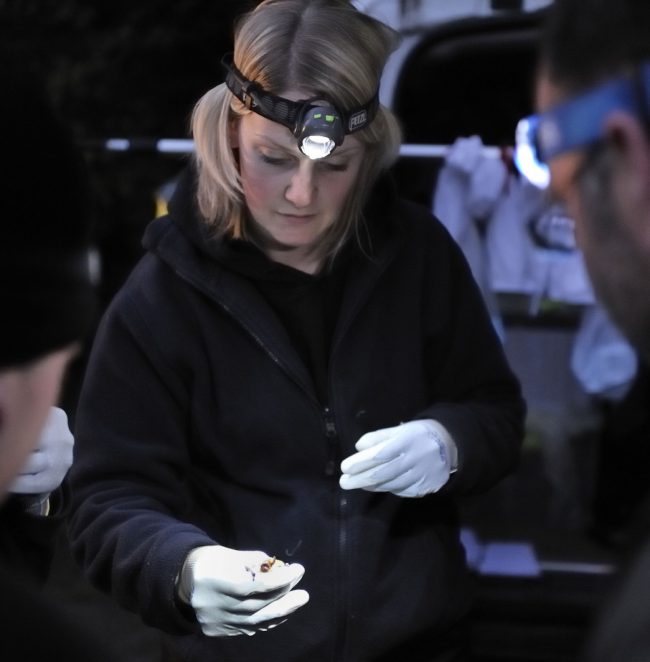
Threave and Beyond
Annual funding from the Jeniam Foundation has made it possible for NTSUSA to make critical grants to support wildlife and environmental conservation, including the bat reserve at Threave – Scotland’s only designated bat reserve. This fiscal year, grants have funded bat monitoring, an important part of protecting and understanding patterns in the species’ habitats and the vital role bats play in the environment; wildlife survey equipment, including trail cameras and sound detectors, critical to helping the Trust identify and monitor the presence and routines of rare and difficult-to-see animals; and wildlife skills training will allow students, volunteers, and staff to gain the required skills to carry out key wildlife research on Trust properties. Bat sound analysis, coastal seabird spotting, and wildflower identification workshops are all necessary functions in measuring environmental health.
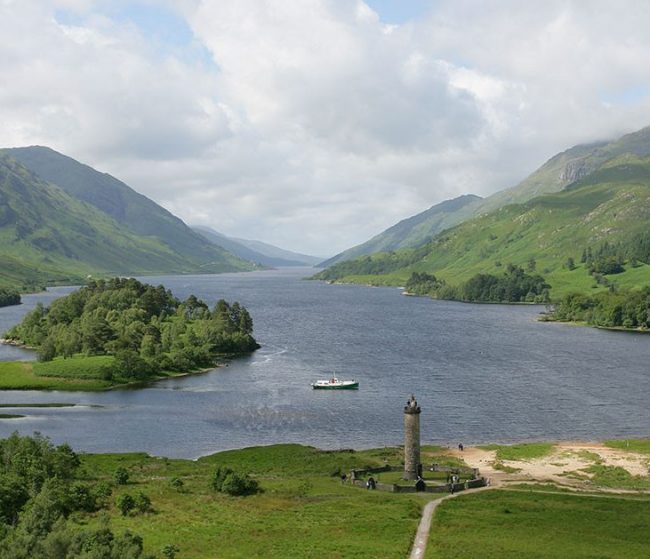
Glenfinnan Monument
Set within an evocative, majestic Highland landscape at the head of Loch Sheil near Fort William, the Glenfinnan Monument was erected in 1815 on the spot where Bonnie Prince Charlie rose his standard in 1745. This iconic landmark commemorates the events that followed at Culloden and remains a tribute to Jacobite clansmen. The Foundation is supporting the Trust’s urgent and comprehensive repair program to address the monument’s tilt, which has occurred due to soil settlement. A new roof and windows are required to ensure that rain does not get in; the tower and boundary walls need repointing; and safety must be improved with the addition of a new handrail and lighting.
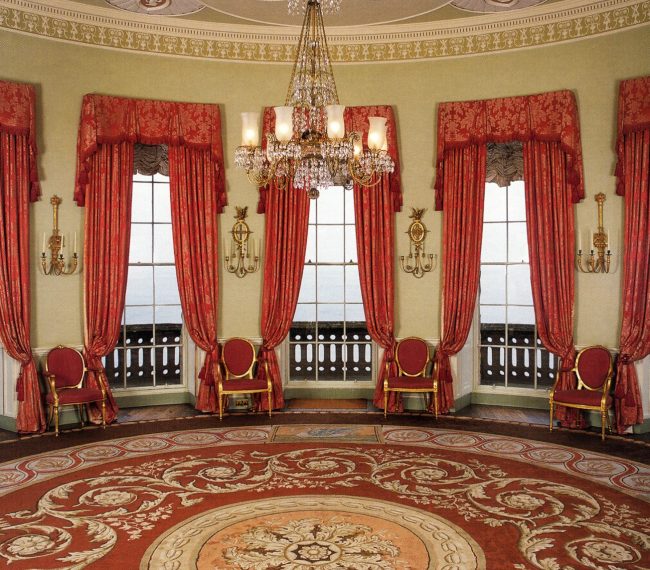
Eyemats for Culzean Castle
With nearly 80,000 visitors touring Culzean Castle each year, the property’s beautiful and historic carpets are at significant risk of damage from foot traffic. The Trust uses a variety of methods to protect these historic textiles, including covering floors with pieces of coarsely woven fabric called druggets; while useful, these options distract from the overall aesthetic of Robert Adam’s interiors. With funding from the US Foundation the Trust will purchase “eyemats” that protect the carpets while also visually representing the surface they are covering. Material printed with the carpet design is laid over the original, allowing visitors to retain the sense of the complete historic interior. Six “eyemats” will replace druggets in rooms including the Library, the Long Drawing Room, and the entrance to the Armory.
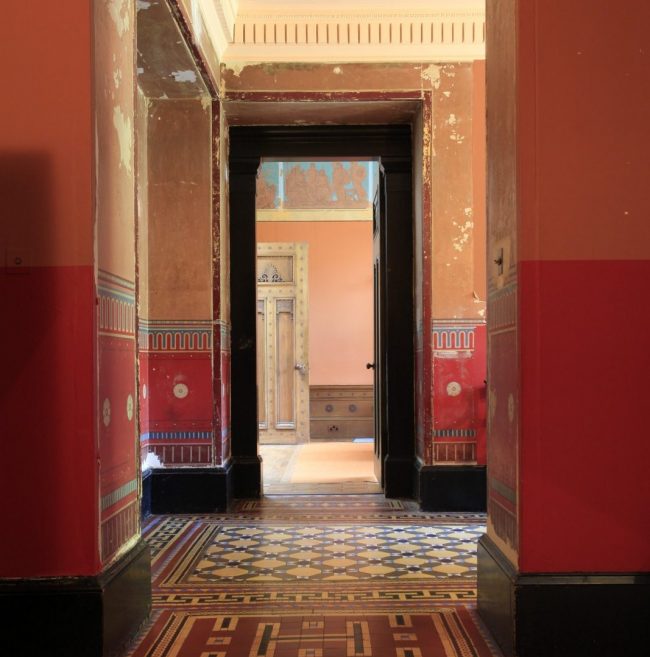
Holmwood Entrance Hall Wall Restoration
The Foundation is continuing its support of Holmwood House, famed Scottish architect Alexander ‘Greek’ Thomson’s finest surviving domestic design, by consolidating and restoring Thomson’s original polychrome wall decoration in the Entrance Hall. This area is in urgent need of attention; some of the original design has been carefully revealed, but the paint surface is severely flaking. Consolidation will prevent further loss of the design and will be followed by reversible restoration work to improve the overall appearance of the Hall. The restorations are part of Scotland’s “Year of Innovation, Architecture, and Design”.
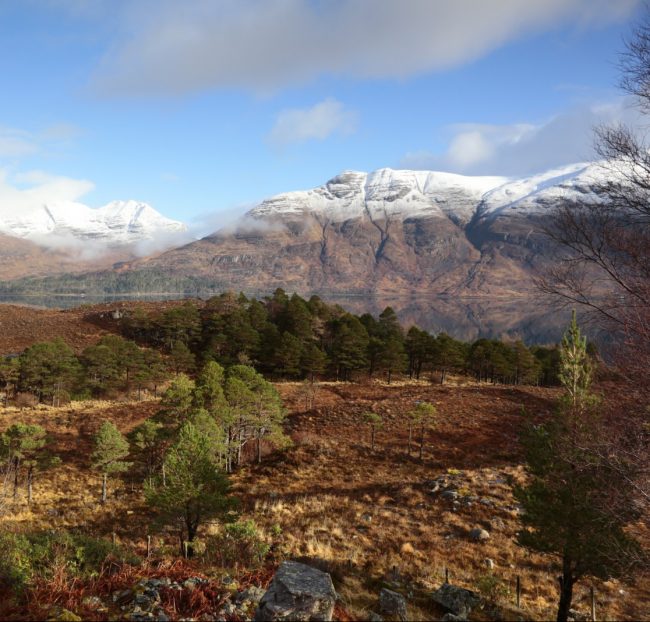
Footpaths at Torridon
With some of the most spectacular mountain scenery in Scotland, and home to five of the Trust’s 46 Munros, Torridon is a magnet for hikers, geologists, and naturalists. Standing at 3,230 feet, Beinn Alligin lies to the north of Loch Torridon and is composed mainly of Torridonian sandstone dating back 750 million years. Urgent work will be undertaken to reduce the erosion of the ridge; decades of walkers across sensitive vegetation have exposed the loose soil to the harsh Scottish elements, and the path is much wider than it should be. Sensitive draining and consolidation work along the length of the ridge will reduce the width of the damage zone, help natural regeneration, reduce erosion, and continue access for walkers. The work will also lessen the impression of human activity on this wild and remote ridge line.
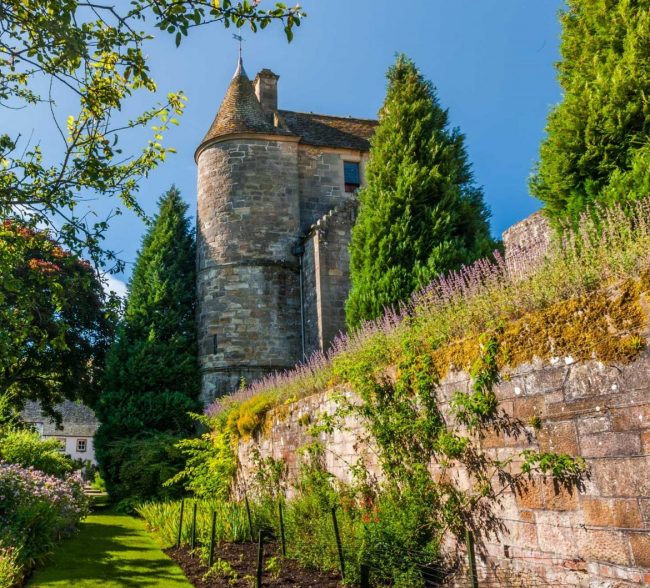
Percy Cane-Designed Garden at Falkland Palace
Benefiting from our matching gift challenge appeal in the fall of 2015, the gardens at Falkland Palace will be reinstalled to the specifications of the 20th-century designer, Percy Cane. One of the few remaining examples of Cane’s work in Britain, the garden is renowned for its historical value and artistic significance. Sadly, the garden deteriorated and no longer represented Cane’s authentic planting design. The restoration of the garden represents a significant conservation project, increasing visitor enjoyment of the property while also offering horticulture students and community members the opportunity to gain hands-on experience.
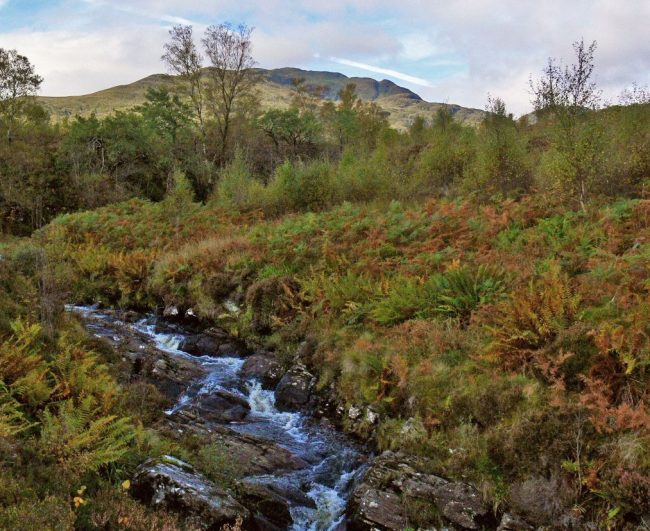
Grazing Rights at Ben Lawers
Ben Lawers National Nature Reserve is one of the botanically richest areas in Britain, renowned and designated for its outstanding range and diversity of arctic-alpine species. Grazing rights on the property under ownership of nearby farmers have prevented the Trust from meeting their botanical conservation objectives on the land. Through the generosity of the Jeniam Foundation, the Trust was able to acquire 244 heritable grazing rights on hill ground at Ben Lawers without having to acquire additional land. This significant investment enabled the Trust to progress toward the objective of having management control of their land at Ben Lawers.
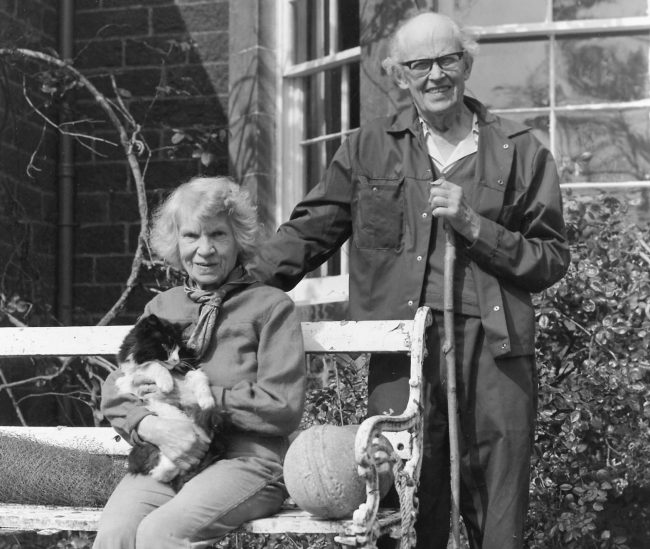
Campbell Canna Archive
Through the generosity of an individual donor, the Foundation has funded the complete digitization of John Lorne Campbell and Margaret Fay Shaw’s archives at Canna House. The recordings made by the couple between 1936 and 1969 captured vital elements of traditional Gaelic culture then still alive in Uist and Barra and on Cape Breton Island, Nova Scotia. The archive includes the first electrical recordings of Gaelic folksongs on Barra, featuring singers not recorded elsewhere. It was John’s express wish that the voices of the past should be preserved for future generations. Support for this initiative will help the Trust in its wider efforts to make the Campbells’ work and life known to wider national and international audiences.
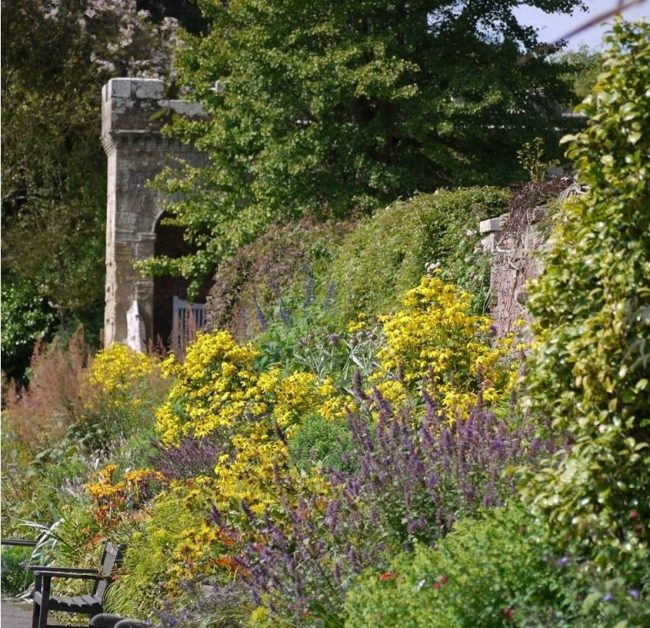
Walled Kitchen Garden at Culzean Castle
During the summer of 2016, the Foundation was challenged to raise $45,000 by the end of the year to support the restoration of the Walled Garden at Culzean Castle & Country Park. The successful campaign was matched dollar-for-dollar by NTSUSA Treasurer Kennedy Richardson – whose ancestors built Culzean – allowing the National Trust for Scotland to move forward with its plans to restore the landscape as a fully functioning 19th-century kitchen garden. The vibrant space will produce fruit, vegetables, and cut flowers for use on the estate and for sale to visitors, and the garden will be transformed into a lively place for learning about heritage horticulture for audiences of all ages.
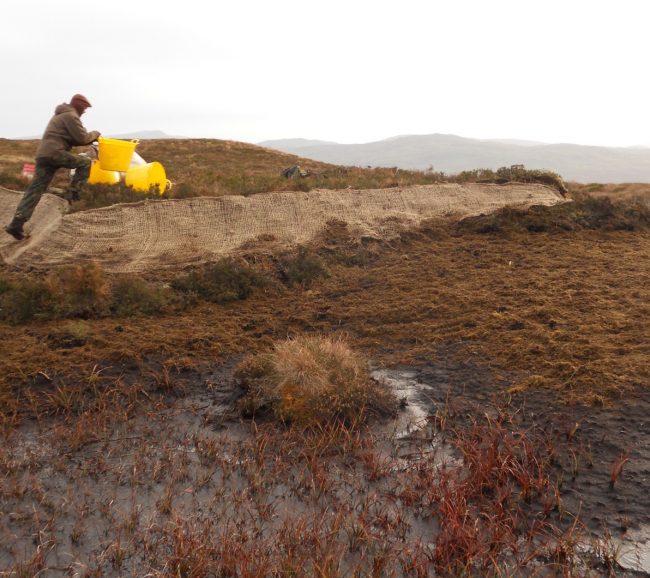
Peat Restoration at Ben Lomond
Rising from the east shore of Loch Lomond to a height of 3,193ft (974m), Ben Lomond offers exhilarating walking and views across the loch and the Trossachs National Park. Ben Lomond is one of Scotland’s most popular summits, attracting over 30,000 walkers and mountaineers every year. The Foundation granted funding to support the maintenance of peat bogs at the property. The importance of the habitats and wildlife supported by blanket peat bog is widely recognized. Keeping peat bogs healthy and wet is a key element of sustainable land use management within the wider strategy of combating climate change.
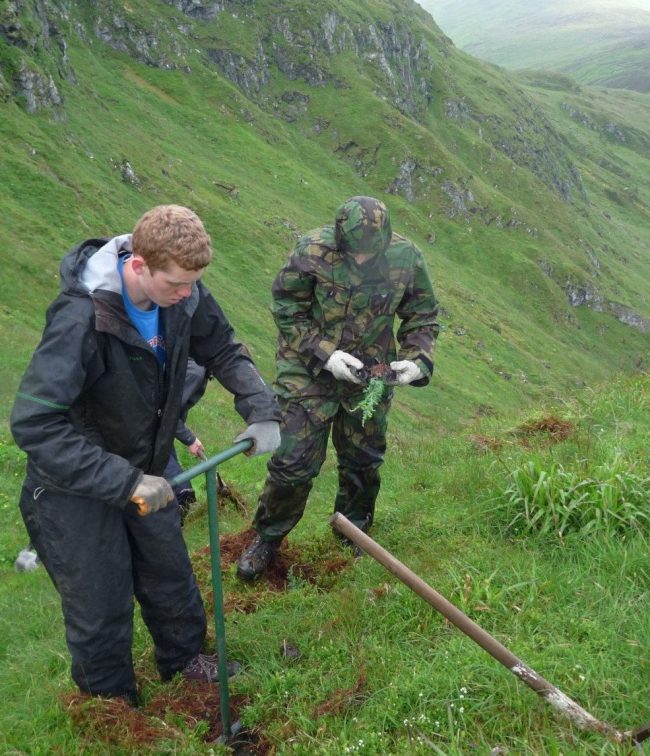
Environmental Conservation at Ben Lawers
Reaching nearly 3,984ft (1,219m) into the sky, Ben Lawers is one of Scotland’s highest Munros. It holds the most important range of rare arctic alpine plants in the UK, is rich in archaeological remains, and teems with wildlife— red deer, ptarmigan, skylarks, and black grouse. Through the generosity of the Jeniam Foundation, NTSUSA granted funding to install a weather station bout 2,000ft (600m) above sea level. The equipment would allow the Trust, in collaboration with a senior lecturer from the University of Dundee, to record and measure wind speed and direction, air temperature and relative humidity, soil moisture content and temperature, solar radiation, and precipitation. The data will be used to evaluate the effects of climate change on the ecosystem at Ben Lawers. Further support from the Jeniam Foundation will continue to fund a three-year program of vital habitat restoration to ensure the long-term maintenance of Ben Lawers.
